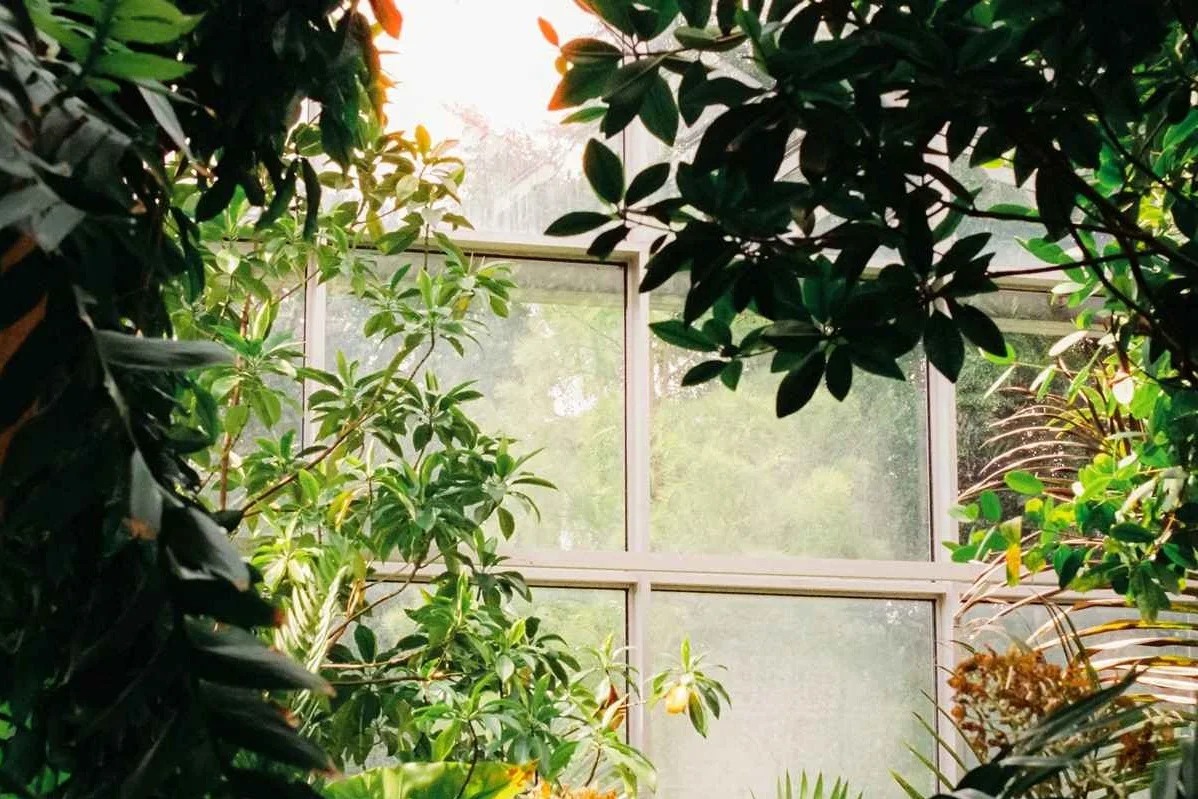Interview with Ksenia Felker - Analog aesthetics rediscovered
Ksenia Felker
Born in Kazakhstan, Ksenia Felker now lives in Frankfurt am Main. Photography has always been a natural form of expression for her creative curiosity. Together with her partner, she runs the studio dreizuzwei and devotes herself to analog photography, where she explores her passion for natural light and refined composition.
In this interview, she shares why mindfulness lies at the heart of her photographic vision, which places and countries inspire her most, and which papers bring her motifs to life.
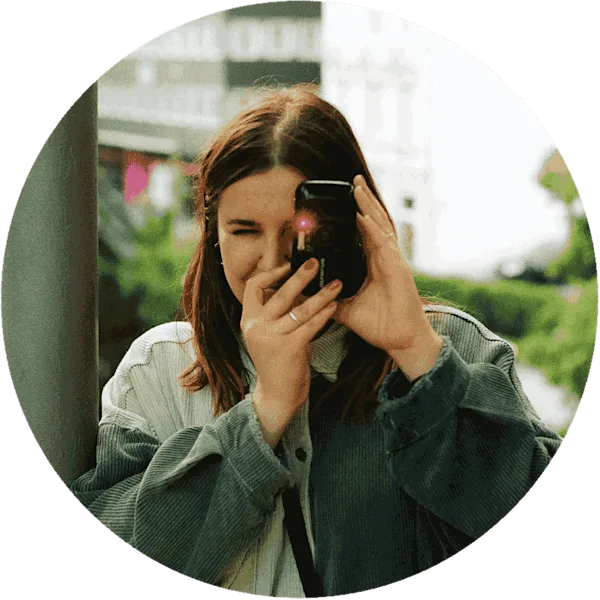
How did you get into photography? Was there a particular moment or experience that led you down this path?
If there was a specific moment, I can’t remember it. I’ve been taking photos for as long as I can remember – basically my whole life. I’ve always loved painting and crafting. I’m a creative, visual person. I think that’s why I got into photography so early on and why it’s stayed with me to this day.
What inspires you most when taking photos – is it your surroundings, people, books, movies, or simply what you encounter in everyday life?
There are many photographers who inspire me deeply. But mostly, it’s what’s right in front of you – where it’s worth taking a closer look. Perfection in a seemingly imperfect moment, like an unmade bed. The urge to capture a moment that’s only fleeting. The interplay of light and shadow.
Many of your photos tell little stories or have a poetic, almost nostalgic touch. How do you create this mood?
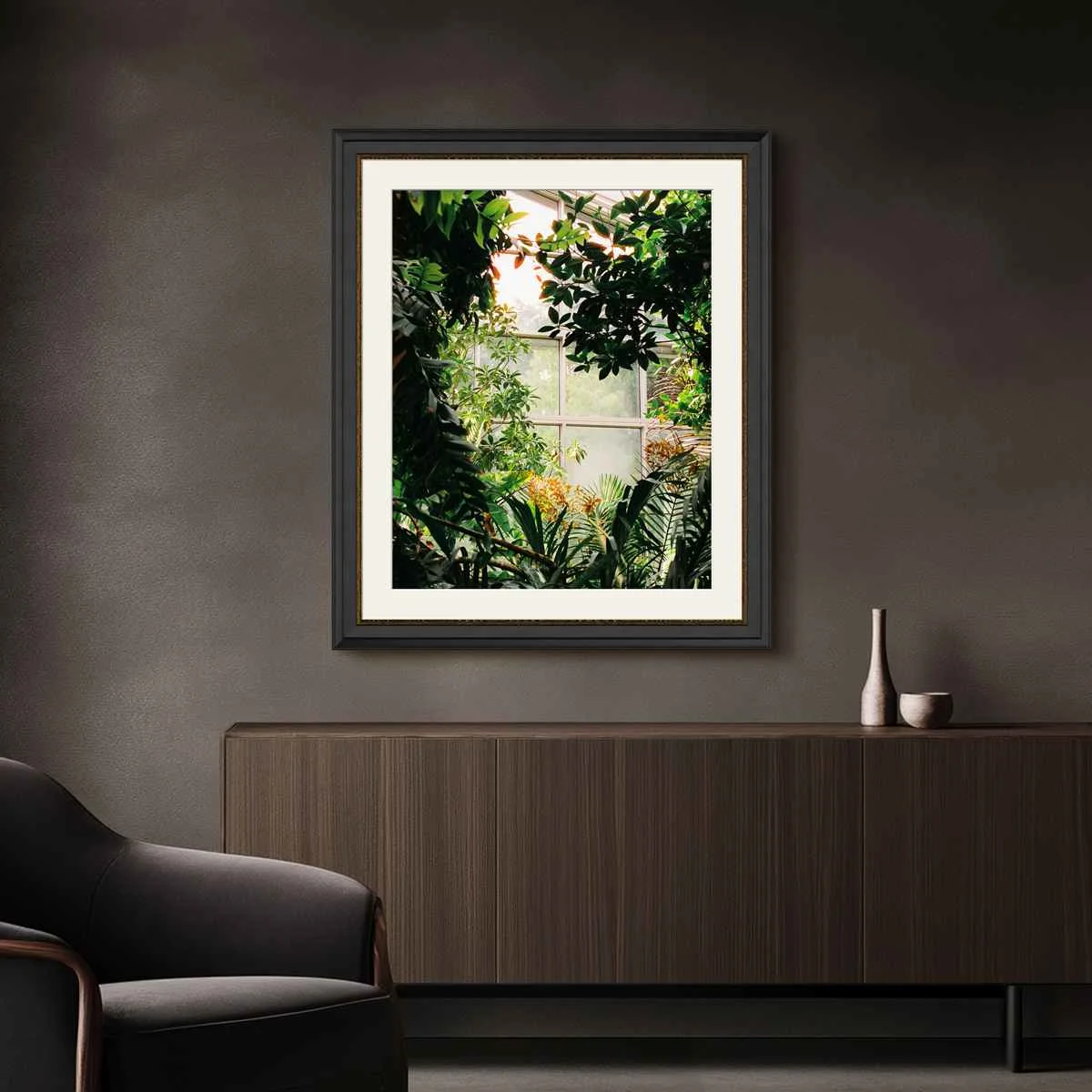
Photo: Ksenia Felker - The London passe-partout frame, with its subtle golden accents and the silky matte texture of Fuji Crystal DP II Silk paper, lends the photograph the artistic presence of a painting.
I think it comes partly from analog photography – the colors, the grain, pure nostalgia. But it probably also comes from my choice of subjects. I love calm scenes, still lifes, and nature. Even in a bustling city, you can find quiet, understated moments that tell a story. Especially when traveling, I like to photograph situations that give me a pleasant feeling: the morning light falling into the bedroom, coffee or a set breakfast table – brief moments that tell a story.
Your work creates a subtle interplay of light and shadow and feels very authentic. How do you decide which moments or scenes are worth capturing? What role does analog photography play in this?
I love taking photos – and by that I mean the process itself: looking through the viewfinder, playing with the settings, pressing the shutter button. Pure joy. So of course, I quickly fill one memory card after another. Analog photography has actually changed that. You approach each subject more consciously. By taking this time, you begin to recognize the truly beautiful moments in everyday life that are otherwise easily overlooked – and that are worth photographing.
Analog photography requires a conscious, slower approach to each subject. How does this mindfulness change your view of the special moment you want to capture?
The moment becomes more intense because you pay closer attention to it. There’s the joy of having found a great subject, and then there’s the anticipation of reliving the moment – once the film has been developed and scanned. There’s always a bit of suspense as to whether the photo will live up to your expectations. But especially after a nice vacation, it feels like a second mini-vacation. You immerse yourself in the moment all over again.
Which places or trips have inspired you most recently?
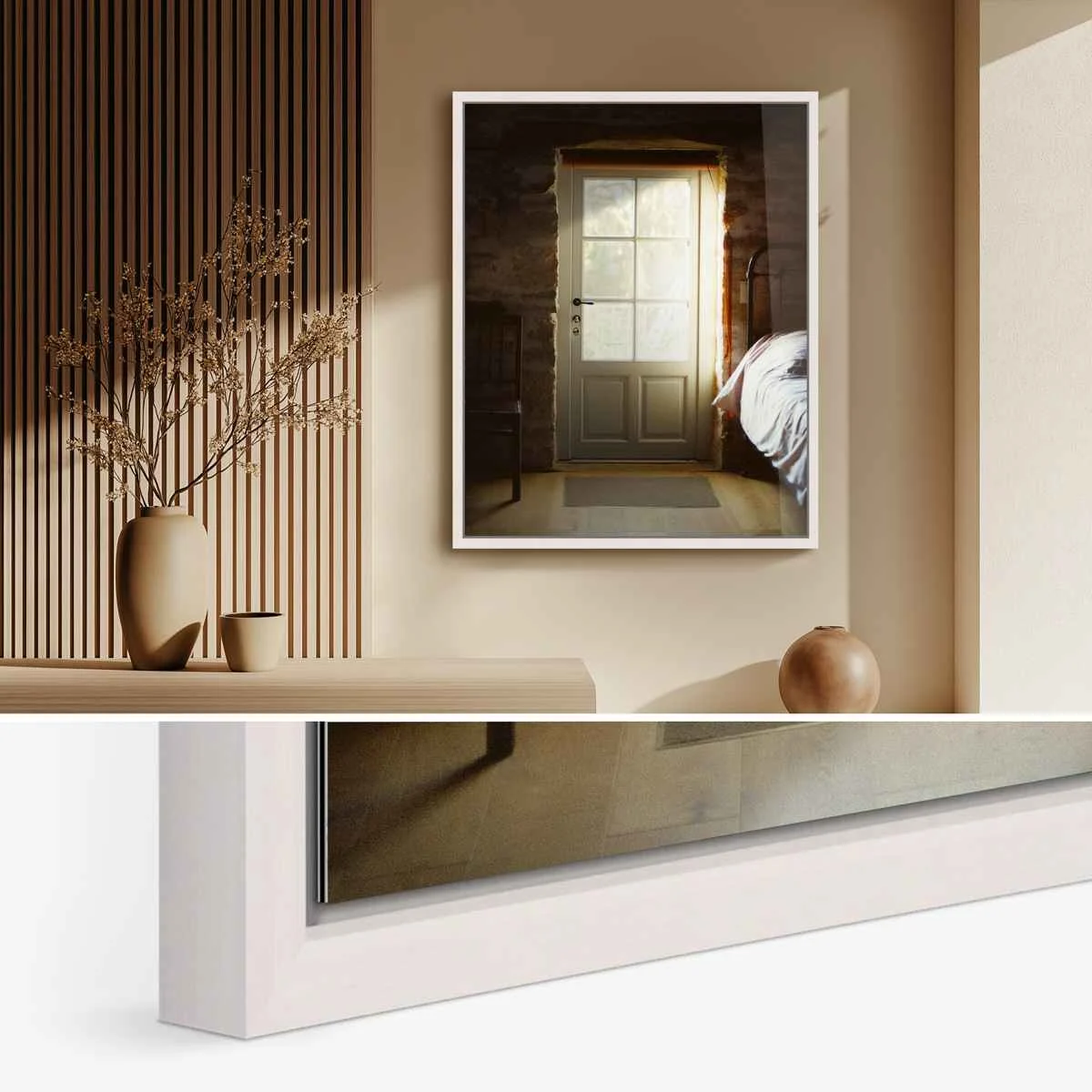
Photo: Ksenia Felker - The Basel floater frame in white maple makes the photo print appear to float behind glossy acrylic glass. This combination lends the image an airy lightness and highlights the warm, natural atmosphere of the motif.
My trips to Italy and Sweden have inspired me in a special and lasting way. It’s impossible not to fall in love with Italy’s architecture, culture, and cuisine. There’s so much life, passion, and history. And of course, every photographer loves the abundance of sunlight. Sweden, on the other hand, is quiet and unhurried – a country made for relaxation. I especially fell in love with its untouched nature and countless birch trees – they reminded me of vacations with my family in Siberia.
How important is it for you to see your pictures in print, and what difference does that make to the impact of your work?
Seeing your own pictures in print – and especially being able to touch them – is a wonderful feeling. Like most people, I have tens of thousands of photos on my smartphone, laptop, and external hard drives, and only a few make it into the analog world. We’re used to small screens, but some images only reveal their full power at a certain size – only then do the details come to life. For me, no display can reproduce the liveliness of an image as well as a print.
What do you look for when choosing materials for your prints to emphasize their message?
We’re all familiar with classic glossy photo paper. It triggers nostalgia for me because it reminds me of the many childhood photos of myself. For my own work, I usually prefer matte, high-quality paper. I find that a motif comes into its own better when it doesn’t reflect light. Details, colors, and sharpness appear more intense. In addition, a fine art print provides a good foundation for selecting other elements such as frames or passe-partout.
If someone wants to develop their own photographic style, what exercises or approaches have helped you the most?
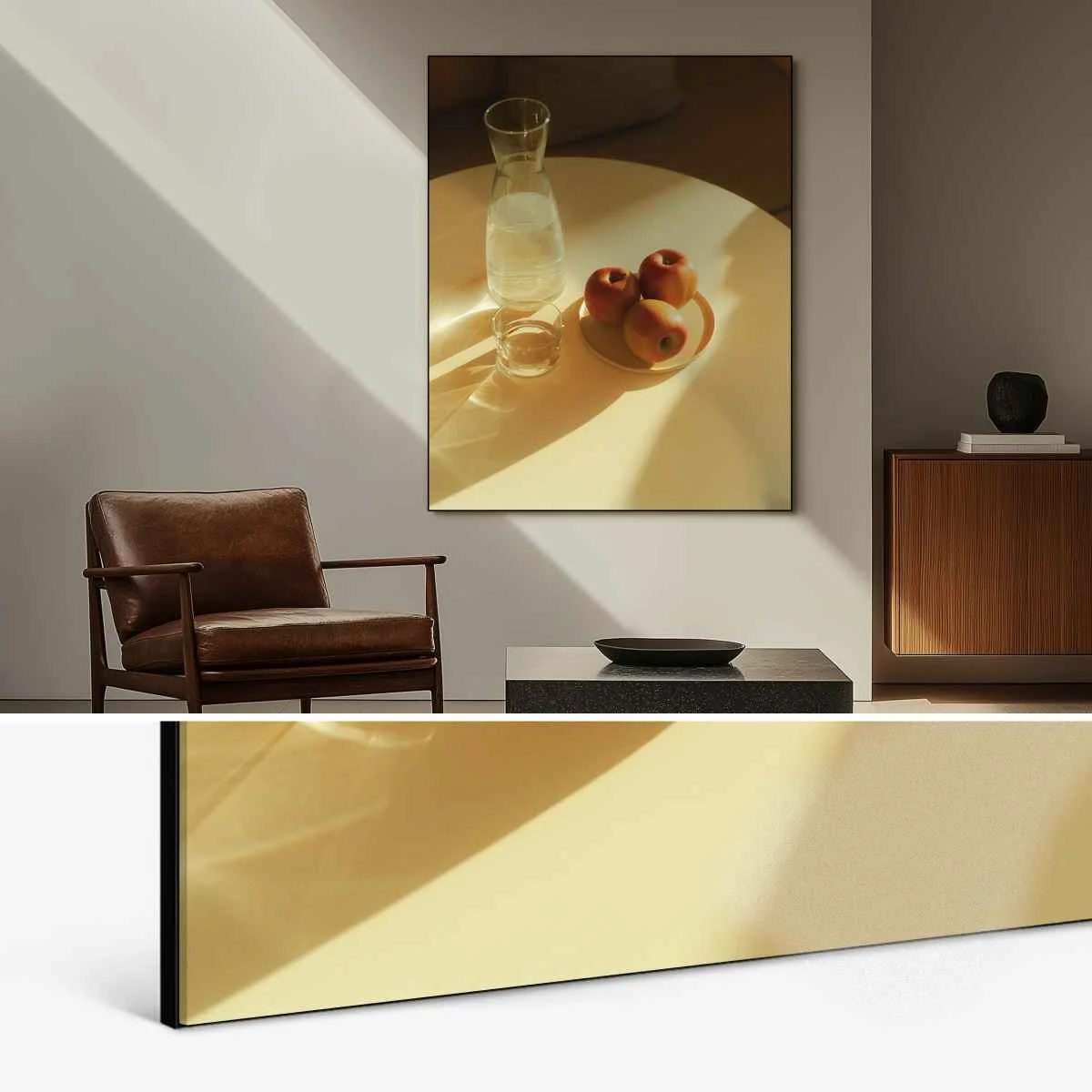
Photo: Ksenia Felker - Under acrylic glass, the photo print gains impressive depth. The black Slimline frame, with its narrow edge, emphasizes the clean aesthetic and perfectly complements the minimalist composition of the still life.
I don’t even know if I have my own photographic style. I think, like so many things in life, it’s constantly evolving. What helped me most was exploring my camera both theoretically and practically. In the past, automatic mode was my faithful companion – I’d press the shutter button without thinking about aperture, ISO, or shutter speed. Gaining a deep understanding of the settings and capabilities of each camera has helped me enormously. Depending on the values you choose, a subject can look completely different. Experimentation and creativity have shaped my work.
What else should we know about you?
I’m Ksenia, 30 years old, and I’ve been living in beautiful Frankfurt am Main for five years. I was born in Kazakhstan and have moved around a lot in my life. One thing has always accompanied me: photography. Even in my main job in marketing, I can indulge my passion for imagery. I met and fell in love with my partner through photography – so I probably don’t need to mention again how important it is in my life.
WhiteWall Product Recommendations
You might also like these articles:
Submitted by WhiteWall Team
Faces in the Rain – Interview with Maximilian Streich
Where others see only gray, rainy days, Maximilian Streich discovers magical moments in the interplay of water and light. In his series The Liquid Faces, reflections on wet surfaces reveal faces and figures – fleeting apparitions that exist for only a moment before disappearing again.
Submitted by WhiteWall Team
Between wildflowers and film rolls – Interview with Tiffany Newman
She shoots analog, trusts her intuition, and often finds the best subjects in chaos: Tiffany Newman takes us into her world of wildflowers, colors, and magical moments in nature. In this interview, she talks about how she got into photography as a kid, why a hailstorm in the Dolomites led to her favorite pictures, and what advice she has for young photographers who want to develop their own style.
Submitted by WhiteWall Team
Playful experiments with Max Slobodda
Surreal scenes and strong colors are the focus of Max Slobodda's projects. Using design elements such as colored foils, overexposure, analog effect filters or throwing objects in the air, he stages everyday situations in an unconventional way: “I have always been fascinated by the fact that certain forms of art raise questions and cause confusion.”

